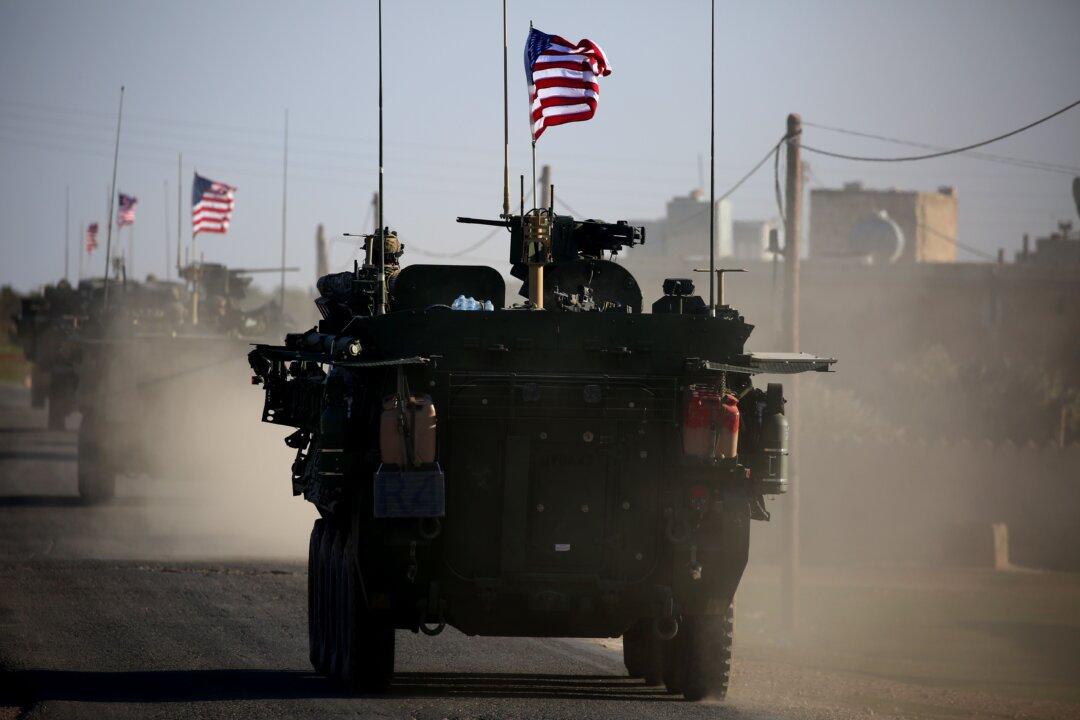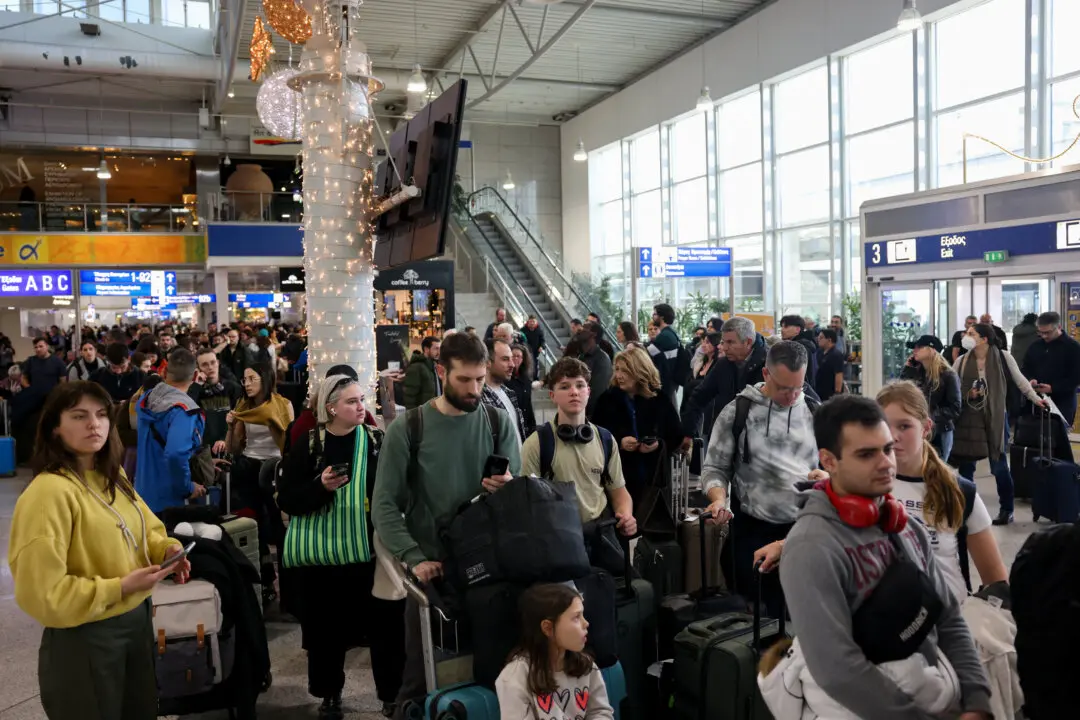BAGHOUZ, Syria—ISIS terrorists along with women and children surrendered in the hundreds to U.S.-backed forces in eastern Syria on March 14 as the jihadists lost ground in their last shred of territory.
Many of the men were limping as they crossed out of the Baghouz enclave along a dirt path over a rocky hill, with weeping children and fully veiled women, dragging suitcases and backpacks behind them.





